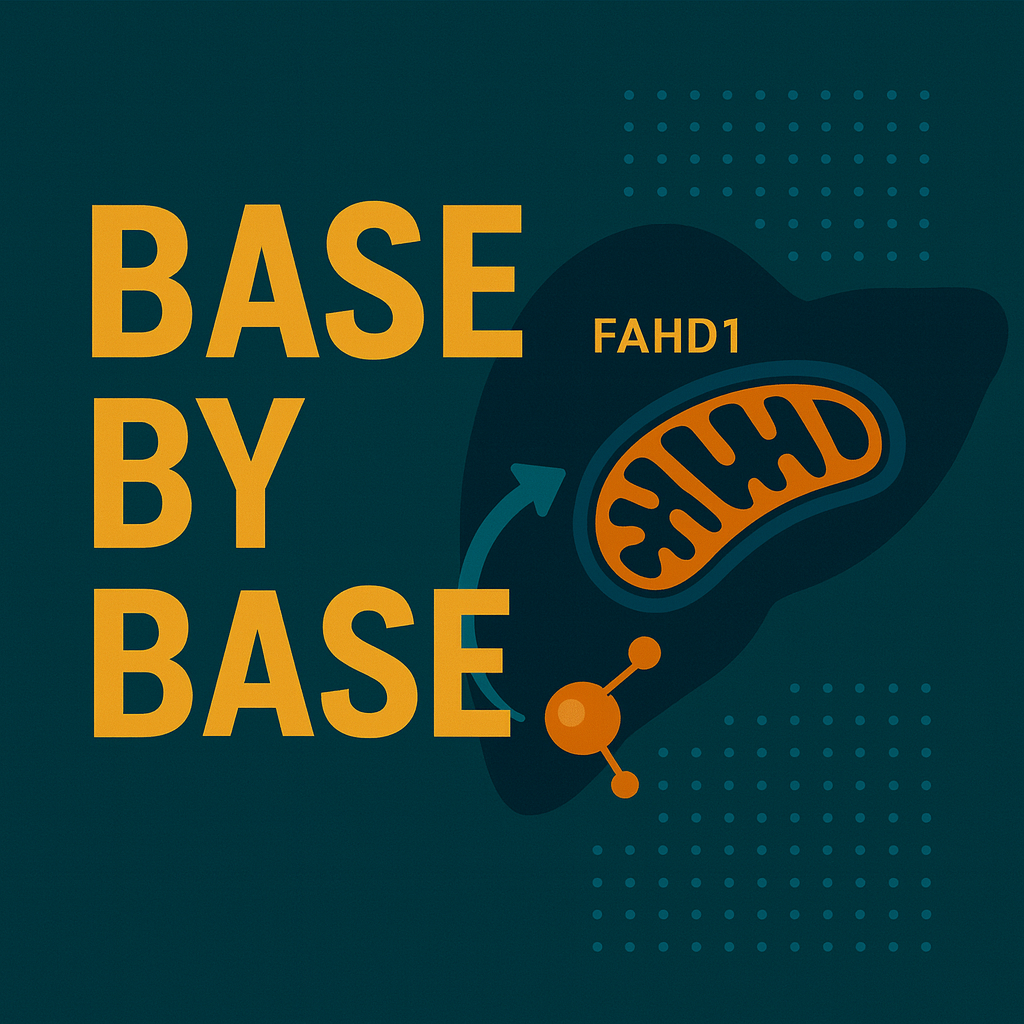Show Notes
️ Episode 11: Targeting Mitochondria: A Therapeutic Strategy for Dnmt3a-Mutant Clonal Hematopoiesis
In this episode of Base by Base, we dive into a compelling study published in Nature Communications that reveals a novel therapeutic vulnerability in clonal hematopoiesis driven by DNMT3A mutations. The research identifies elevated mitochondrial membrane potential (Δψm) as a selective weakness in mutant hematopoietic stem and progenitor cells (HSPCs), paving the way for targeted interventions.
Led by Young and colleagues, the study demonstrates that Dnmt3a-mutant HSPCs exhibit enhanced oxidative phosphorylation, mitochondrial hyperactivity, and increased Δψm, providing them a competitive advantage during aging. Exploiting this vulnerability, the researchers show that long-chain alkyl-TPP molecules like MitoQ can selectively disrupt mitochondrial function and ablate the mutant cells' fitness advantage.
Key insights include:
Metabolic Reprogramming: Dnmt3a-mutant HSPCs display hypomethylation and upregulation of oxidative phosphorylation genes, leading to elevated mitochondrial respiration and Δψm.
Therapeutic Targeting with MitoQ: MitoQ selectively accumulates in mitochondria of mutant HSPCs, impairing their respiration, inducing mitochondrial-driven apoptosis, and eliminating their competitive advantage both ex vivo and in vivo.
Conserved Mechanism: The mitochondrial vulnerability and response to MitoQ are conserved in human DNMT3A-knockdown HSPCs, enhancing the translational potential of this strategy.
Selective Action: Wild-type HSPCs are spared, with MitoQ even promoting healthy mitochondrial function in normal cells, underscoring its therapeutic promise with minimal toxicity.
Clinical Relevance: These findings open the possibility of using mitochondrially targeted molecules to prevent the expansion of pre-malignant clones, reducing the risk of cardiovascular disease, leukemia, and other age-related conditions.
This episode underscores how precision targeting of mitochondrial metabolism can transform therapeutic approaches for age-associated clonal hematopoiesis and beyond.
Reference:
Young, K.A., Hosseini, M., Mistry, J.J., et al. (2025). Elevated mitochondrial membrane potential is a therapeutic vulnerability in Dnmt3a-mutant clonal hematopoiesis. Nature Communications, 16, 3306. https://doi.org/10.1038/s41467-025-57238-2
License: This content is distributed under the Creative Commons Attribution 4.0 International License (CC BY 4.0). For more information, visit https://creativecommons.org/licenses/by/4.0/




